|
A new crop
picture near Brandenburg, Germany on May 15, 2016 shows a “pinwheel
spiral”, which seems intended to represent the “front wheel” of an “ET
space shuttle” that is coming in to land
A “pinwheel
spiral” was drawn nicely in crops at Brandenburg, Germany on May 15,
2016. Within this small crop picture, we can see many delicate features,
for example a long, thin “taper” of standing plants at every end of six
different “crescent” motifs:
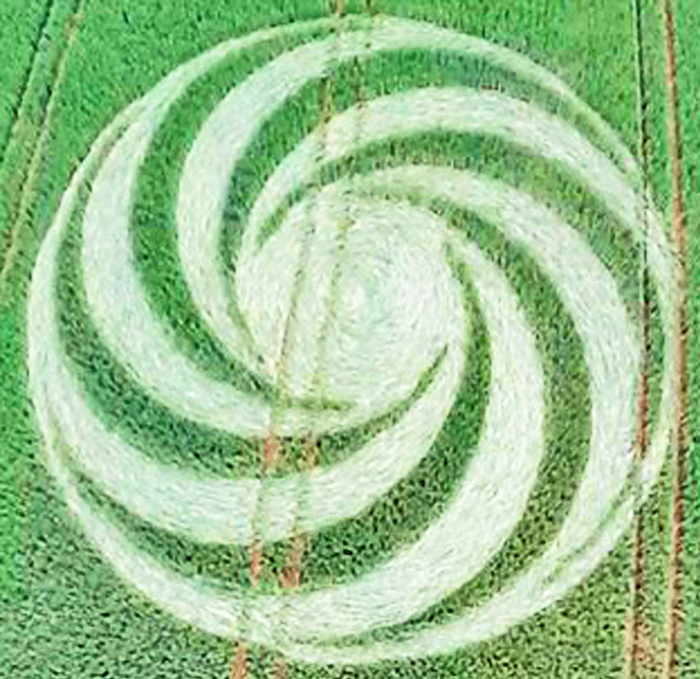
We can also
see a smooth, unbroken continuance of one “crescent” motif, as it
crosses a set of (brown) field tramlines on the right.
In order to
draw this crop picture manually, using “rope and boards”, the
hypothetical field artists would have had to “set a post in the ground”
at six different locations internal to the crop picture, none of which
show any trace of disturbance from human footsteps.
They would
also have had to draw each of six “crescent” motifs with two
slightly-different radii of curvature (see
Radius_of_curvature), so as to produce the outlines of two
slightly-different “ellipses” rather than of “circles” (see
Ellipse). So there are no indications at present that it was locally
human-made.
The overall
shape of this “pinwheel spiral” could suggest many different meanings.
Is someone trying to tell us about a “child’s toy”, a “spiral galaxy”,
or maybe “lunar phase cycles”?
Any of these
interpretations might seem equally plausible, until we study the new
crop picture in its proper landscape setting, using Google Earth at
latitude 52.411o N, longitude 13.432o E. There we
can see the landscape image of an “ET space shuttle”, which is just
about to “descend”, perhaps in the year 2017. Two large “numbers” of “1”
and “7” appear in the field below.
When we zoom
in to see where that new crop picture was drawn, we can see right away
that this “pinwheel spiral” represents the “fast-turning front
wheel” of some “ET space shuttle”:
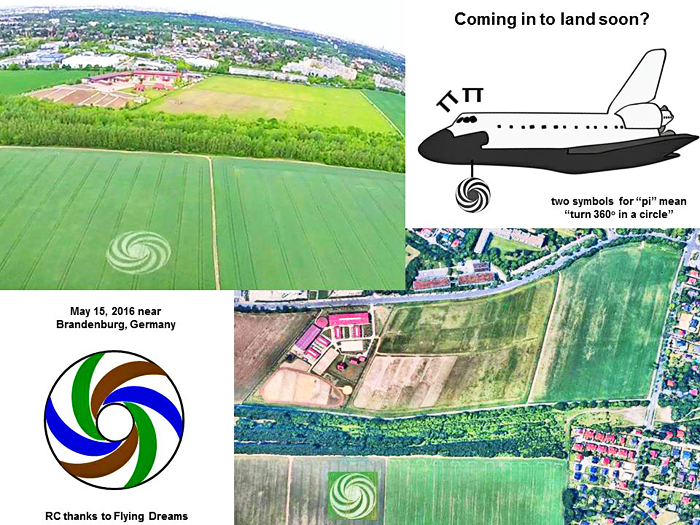
Very funny!
Airplane or space-shuttle wheels certainly do turn very rapidly, when a
craft lands.
Two small
landscape symbols for “pi” or π, just above the “cockpit” of that
“space shuttle”, tell us that the “pinwheel” is “turning by 360o
in a circle”, since 2 x pi radians equal 360 degrees. Six long white
rectangles within the body of that “space shuttle”, just behind the
“cockpit”, match six long, thin crescents in the “pinwheel” crop picture
below.
Why did
those crop artists draw the “front wheel” of some “ET space shuttle”
with a “pinwheel” shape? It was perhaps because that “pinwheel”
resembles the actual wheels used on NASA Spirit Rover, a small probe
which was sent from Earth in 2004 to land on Mars (see
Spirit_(rover) ):
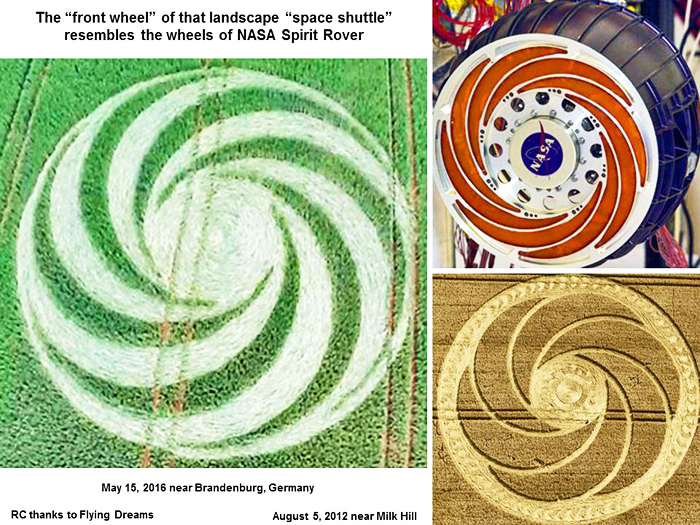
In other
words, their “pinwheel” shape implies the “landing of a foreign space
vessel” on “some other planet”.
This same
“pinwheel” shape was drawn previously in crops near Milk Hill in England
on August 5, 2012, on the same day when another NASA probe called
“Curiosity” landed on Mars (see
20120805).
When we
study the landscape near that new Brandenburg crop picture on a much
broader scale, we can see that the “ET space shuttle” is planning to
“descend” soon, then “come into land”:
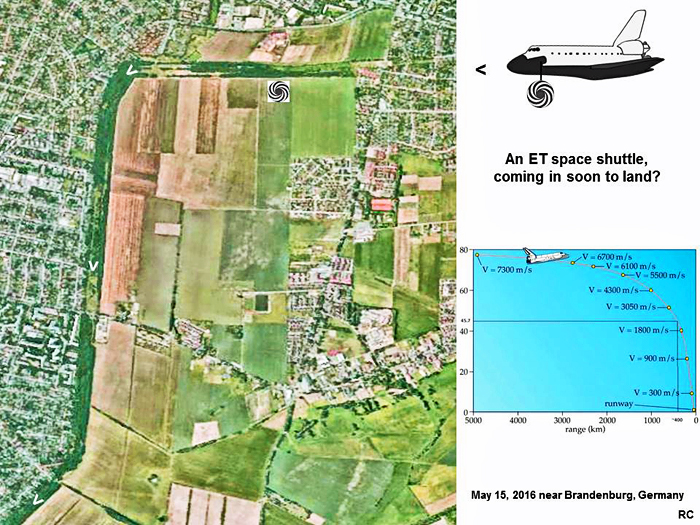
“Come on
down, the water’s fine!”
(see John Candy at time 2:33 of
www.youtube.com)
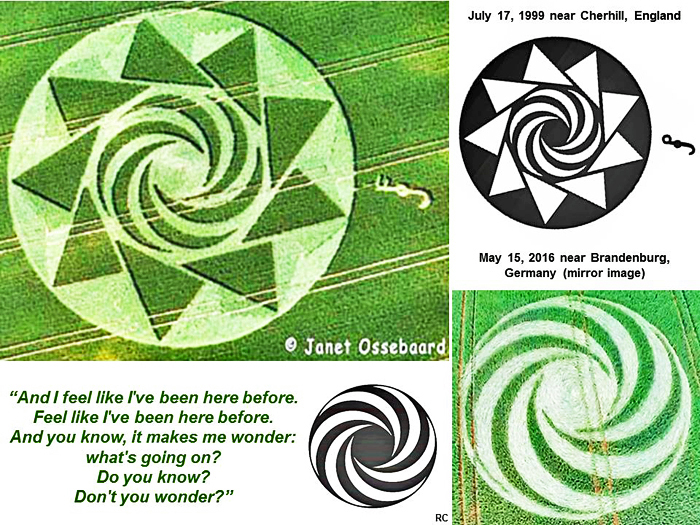
Red Collie
Returns
(Dr. Horace R. Drew) |